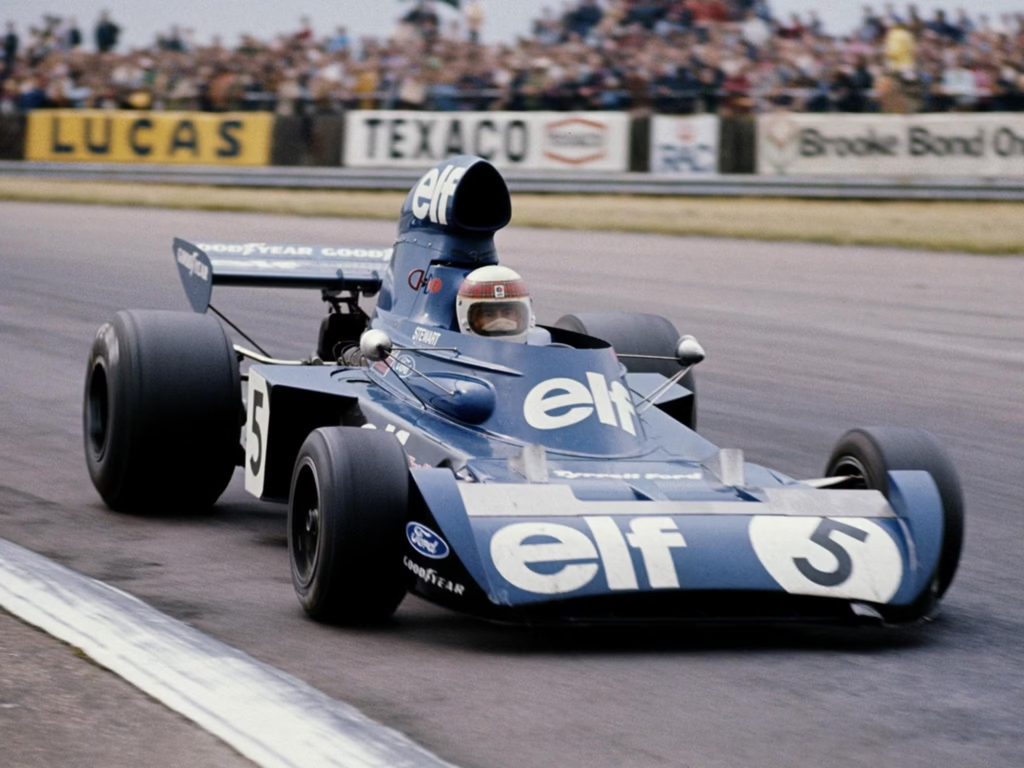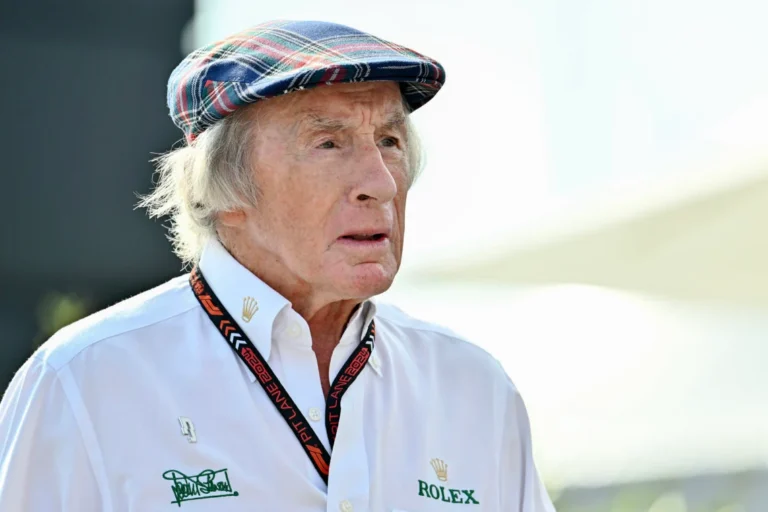Few figures in the history of motorsport have left a mark as profound and enduring as Jackie Stewart. Nicknamed “The Flying Scot,” Stewart was not only one of the most talented and successful Formula One drivers of his era, but also a trailblazer who redefined the role of a racing driver both on and off the track. With a career that combined sheer speed, strategic brilliance, and a fierce commitment to driver safety, Jackie Stewart rose to iconic status in a sport that was once synonymous with danger. His story is one of passion, precision, and purpose—a story that continues to inspire racing enthusiasts and athletes around the world.
Jackie Stewart: Racing Legend and F1 Icon
Sir Jackie Stewart is a name synonymous with excellence, courage, and transformation in the world of Formula One. A three-time world champion, Stewart’s legacy extends far beyond the checkered flag. His achievements on the track are legendary, but it is his advocacy for safety and enduring influence on the sport that truly set him apart as an icon. Known as “The Flying Scot,” Jackie Stewart is revered not only as one of the greatest racing drivers in history but also as a pioneer who helped reshape the future of Formula One.
Early Life and Passion for Racing
Growing Up in Scotland
Born on June 11, 1939, in Milton, Dunbartonshire, Scotland, John Young Stewart—better known as Jackie Stewart—grew up in a family with a deep connection to automobiles. His father owned a garage, and his older brother Jimmy was also a racing driver. From a young age, Jackie was surrounded by cars, grease, and a culture of speed that would one day define his legacy.
Despite struggling with undiagnosed dyslexia during his school years, Stewart found solace and purpose in mechanical work and driving. His condition made academics difficult, but it also helped foster an intuitive, hands-on approach that would become his trademark behind the wheel. In many ways, the road to Formula One began in the humble surroundings of his family’s garage.
From Clay Pigeon Shooting to Motor Racing
Interestingly, before embarking on a racing career, Jackie Stewart was an accomplished clay pigeon shooter. Representing Scotland in international competitions, he developed the focus, coordination, and mental discipline that would later serve him well in motorsport. His precision with a shotgun translated beautifully to his control of a racing car, and by the early 1960s, he had shifted his ambitions toward professional racing.
Jackie Stewart’s Rise to F1 Stardom
Breaking Into Formula One
Jackie Stewart’s professional racing career began in earnest in the early 1960s. His breakout performance came in 1964 when he tested for Ken Tyrrell’s Formula Three team. Stewart impressed immediately, and by 1965, he had joined the BRM team in Formula One. His debut season saw him finish third in the World Championship—an extraordinary achievement for a rookie.
His smooth driving style, technical understanding of the car, and fearless determination quickly made him a fan favorite and a respected competitor. Stewart’s meteoric rise was characterized by a natural talent that seemed effortless, yet was backed by relentless preparation and a sharp mind.
Championships and Iconic Victories
Jackie Stewart won his first Formula One World Championship in 1969, driving for Matra International under Ken Tyrrell’s leadership. His dominance that season was spectacular—he won six of the eleven races, often leaving the competition far behind.
He claimed his second and third titles in 1971 and 1973 with Tyrrell, further cementing his place among the greats. In total, Stewart secured 27 Grand Prix victories over his F1 career, a record that stood for over a decade. His triumphs included legendary races such as the 1968 German Grand Prix at the Nürburgring, where he won by four minutes in treacherous weather—a performance often cited as one of the greatest in the history of the sport.
Pioneer for Safety in Formula One

A Dangerous Era
During the 1960s and 1970s, Formula One was notoriously dangerous. Tracks lacked proper barriers, cars lacked the structural integrity to withstand crashes, and medical facilities at race circuits were often minimal or nonexistent. Drivers died regularly, and Stewart himself witnessed the deaths of close friends and fellow competitors.
Rather than accept this grim reality, Jackie Stewart chose to challenge it. He became one of the earliest and most vocal advocates for improved safety standards in motorsport, a stance that initially made him unpopular with organizers and some fans who saw it as a threat to the sport’s rugged image.
Leading the Charge for Change
Stewart campaigned tirelessly for improved track design, better medical care at circuits, proper barriers, seatbelts, and fire-resistant gear for drivers. He even boycotted races when he believed the safety conditions were unacceptable. His efforts led to meaningful changes that saved countless lives and revolutionized the sport.
By the time he retired in 1973, Stewart had not only achieved greatness behind the wheel but had also begun reshaping Formula One into a more professional, safer environment. Today’s F1 drivers owe much of their well-being to his advocacy.
Life After Racing
Transition to Broadcasting and Business
After retiring at the peak of his career in 1973, Jackie Stewart remained deeply involved in the sport. He transitioned into broadcasting, becoming a familiar and insightful voice in motorsport media. His commentary work with ABC and NBC in the United States helped bring Formula One to new audiences.
He also built a successful business career, founding Stewart Grand Prix in the 1990s with his son Paul Stewart. The team competed in Formula One from 1997 to 1999 before being sold to Ford and rebranded as Jaguar Racing, and later, Red Bull Racing.
Personal Challenges and Advocacy
Off the track, Stewart has faced personal challenges with the same resilience that defined his racing career. His wife, Helen, was diagnosed with dementia, prompting Stewart to launch “Race Against Dementia,” a charity aimed at funding research into the disease. He has become a prominent advocate for dementia awareness, channeling his fame and influence toward meaningful causes.
Honors, Awards, and Legacy
Accolades and Knighthood
Jackie Stewart’s achievements have been recognized with numerous honors. He was awarded an OBE in 1972 and was knighted in 2001 for his services to motorsport. His knighthood was a fitting tribute to a man who had given so much to his sport and country.
In addition to his three world championships and 27 Grand Prix wins, Stewart’s legacy is defined by his courage, innovation, and relentless pursuit of excellence. His place in the pantheon of Formula One greats is undisputed.
Influence on Future Generations
Modern F1 drivers often cite Jackie Stewart as a role model and trailblazer. His meticulous preparation, professionalism, and insistence on safety have become hallmarks of the sport today. Stewart helped evolve Formula One from a daredevil pursuit into a high-tech, high-performance global phenomenon.
Through his mentoring and charitable work, Stewart continues to inspire new generations—on and off the track.
Conclusion
Jackie Stewart is far more than a racing driver; he is a symbol of progress, courage, and determination. As a three-time Formula One World Champion, his prowess behind the wheel was unmatched during his era. But it is his tireless advocacy for safety and his role in modernizing motorsport that make his legacy truly remarkable. From a young Scottish boy with a love for engines to a global ambassador for racing and health causes, Stewart’s journey is both inspiring and transformative.
Today, Jackie Stewart stands as a towering figure in the history of Formula One—a true racing legend and icon whose influence continues to be felt in every corner of the motorsport world.
Read more: Phil Foden Mum: The Woman Behind the England Star’s Rise to Fame


